#the sky above berlin
Explore tagged Tumblr posts
Photo





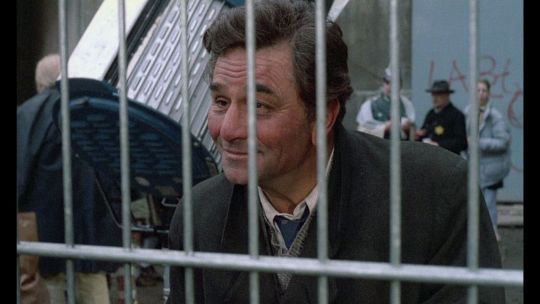

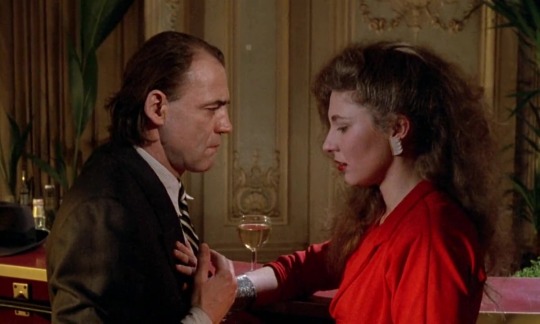
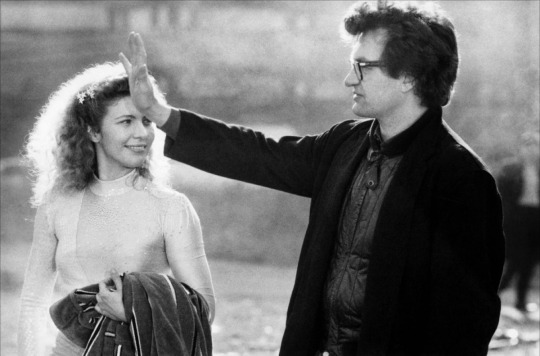
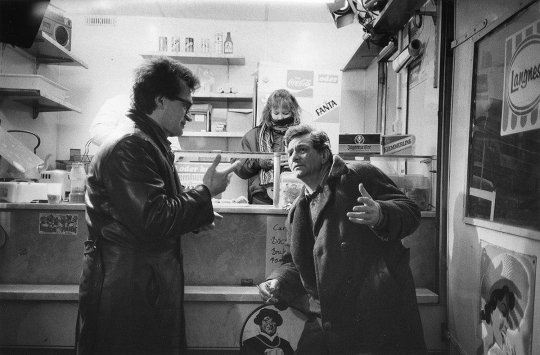
Wings of Desire (Der Himmel über Berlin) (1987) Wim Wenders
February 2nd 2023
#wings of desire#der himmel über berlin#1987#wim wenders#bruno ganz#solveig dommartin#otto sander#peter falk#curt bois#nick cave#claire denis#the sky above berlin#the sky over berlin#favourite
129 notes
·
View notes
Text




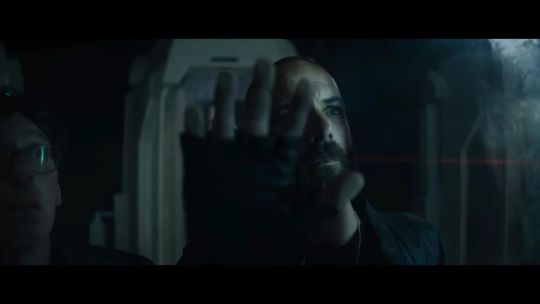
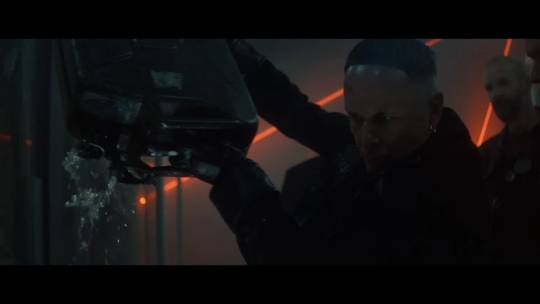
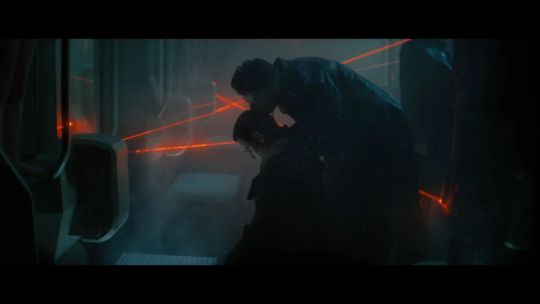

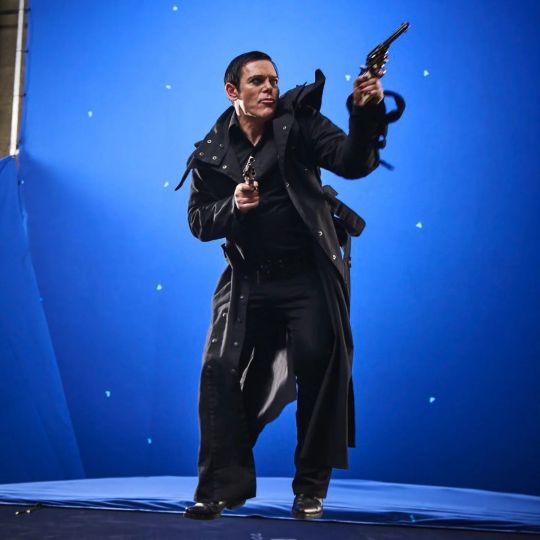

ADIEU (2022) In early May 2022, Specter Berlin posted Instagram stories suggesting that he was working with Rammstein again. Rumours were circulating, but it took over half a year before the first Adieu teaser was released 21 November. The teaser had clear Specter-esque imagery with his signature red lines that were also present in the Deutschland music video. Three more teasers followed, showing bodies inside some kind of cryo chambers; Rammstein in a cage, chained, with grotesque contraptions on their heads; and finally, the band all in long, black coats, walking side by side inside the Opéra de Paris. «"Adieu" was directed by Specter Berlin and shot in Paris at the beginning of May over the course of 3 days – including one night in the Garnier Opera. It was the first time the latter allowed explosives to be used on their marble, also making a unique exception for Rammstein to use smoke on the premises», Rammstein wrote on social media. On 24 November at 1700 CET, the close to nine minute long video premiered. A special countdown started where the Deutschland music video ended; a glass coffin floating through space above earth, with a red line shooting up from somewhere on the ground and into the atmosphere. The countdown took us closer and closer to earth, finally showing where the line came from: Paris, France. Then, the video started, pinpointing the spot to the Palais Garnier - the Ópera National de Paris. Using imagery full of references to Rammstein’s long history, Specter guided the viewers through an emotional journey where the band members fought their way to destroy their own - copies? Clones? Originals? and then struggling, imprisoned, attacked by a horde of ‘the damned’, breaking free, and soaring to the sky before finally, in the heartbreaking credits, it is revealed that they never even made it to that first room to begin with, but all got killed while trying to get there. Only Rammstein can tell if they will ever make more music videos. Until that happens, Adieu stands as a powerful, visual goodbye from a band with an unbelievably strong video catalogue. 📷: Jens Koch @jenskochphoto, Chico Luciani @chico_luciani screenshots
x
#rammstein#adieu#2022#20s#music video#till lindemann#flake lorenz#paul landers#christoph schneider#richard kruspe#oliver riedel#opera garnier#jens koch#chico luciani
105 notes
·
View notes
Text
Whumptober Masterlist 2023
Masterlist of fic
(Warnings at the start of every chapter, please be kind to yourself. Gif not mine; I do not possess that kind of power. This will be updated with links as we go and when placed on ao3 will be updated with the link. A lot of these can be read as one shots (I’ll try and mark the ones that can be read as such with a *) but together make a whole story; the story of how Clint and Natasha got married.)
the language of flowers and silent things.
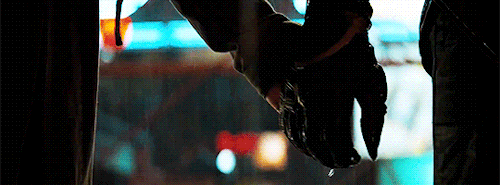
2011 - Kashmir (how many fingers am I holding up) *
1984 - Russia (I’ll call out your name but you won’t call back) *
1984 - Iowa (make it stop) *
2012 - New York (shock)
2012 - New York (it’s broken)
1999 - Iowa (made to watch)*
2013 - New York / Wichita Falls (radio silence)
2013 - New York (it’s all for nothing)
1994 - Ohio (Polaroid) *
2014 - Budapest (you said you’d never leave)
2014 - Singapore (Captivity)
2014 - Singapore / Malaysia (Red) <now with amazing art by @oceanspirit9 >
2009 - New York (I don’t feel so good) *
2010 - Okinawa (just hold on)*
2010 - Okinawa (I’m fine) *
2014 - Rome (don’t go where I can’t follow)
2007 - Russia/France (leave me alone)*
2014 - New York (I tend to deflect when…)
2011 - Iowa (floral bouquet)*
2013 - New York (found family)*
2014 - New York (vows)
2012 - New York (watch out)*
2014 - New York (Shadows)
2014 - New York (I thought they were with you)
2014 - New York (buried alive)
2014 - New York (you look awful)
2014 - New York (scars)
2014 - Berlin (aftermath of failure)
2014 - New York (what happened to me)
2014 - New York (borrowed clothing)
2014 - New York (take it easy)
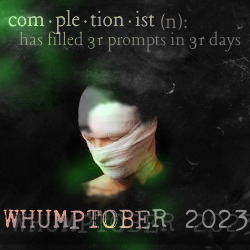
Elevation - Charles Baudelaire
Above the lakes, above the vales,
The mountains and the woods, the clouds, the seas,
Beyond the sun, beyond the ether,
Beyond the confines of the starry spheres,
My soul, you move with ease,
And like a strong swimmer in rapture in the wave
You wing your way blithely through boundless space
With virile joy unspeakable.
Fly far, far away from this baneful miasma
And purify yourself in the celestial air,
Drink the ethereal fire of those limpid regions
As you would the purest of heavenly nectars.
Beyond the vast sorrows and all the vexations
That weigh upon our lives and obscure our vision,
Happy is he who can with his vigorous wing
Soar up towards those fields luminous and serene.
He whose thoughts, like skylarks,
Toward the morning sky take flight
- Who hovers over life and understands with ease
The language of flowers and silent things
Translated by - William Aggeler
#whumptober Masterlist#clintasha#natasha romanoff#black widow#clint barton#my fic#hawkeye#natasha romanoff fic#clintasha fanfiction#clintasha fanfic#clint barton fic#yelena belova#avengers fanfic#marvel fanfic#marvel fic#whump fic#clint barton x natasha romanoff#Natasha Romanoff x Clint barton#the language of flowers and silent things
94 notes
·
View notes
Text
Summer 2024. Visibility of the planets

Calendar summer will begin in a few days. And climatic summer seems to have already arrived. There is also astronomical summer, although this period is quite arbitrary in its meaning, and on the time axis is located between the moments of the summer solstice (in 2024 it falls at midnight from June 20 to 21) and the autumn equinox (September 22). But no matter what “summer” we take into account, it is not very favorable for observing wandering luminaries — planets, first of all — because of the short duration of the night, and secondly — because of the low location of the ecliptic above the horizon during nights, which makes the duration of visibility of the planets very short. True, already in August the situation changes noticeably — the nights become darker and longer, and the morning ecliptic already rises quite high, and the planets moving along it find themselves in significantly more favorable conditions for observations.
On the other hand, in our climate zone, it is in the summer that the most suitable weather occurs, combining the transparency of the atmosphere and a temperature comfortable for observation. This factor to some extent compensates for the not entirely satisfactory astronomical circumstances.
Let’s start with the Moon
Traditionally, the Moon is visible low above the horizon in summer. This does not mean that it does not climb into the sky as high as the summer Sun — it does, but during the day, and in the form of a thin sickle, and is located close to the Sun. It is extremely difficult to see the thin crescent moon during the day near the dazzling summer Sun. Therefore, we see the Moon only when it moves away from the daylight and descends along the ecliptic closer to the southern celestial hemisphere. The morning Moon in summer is visible slightly better than the evening Moon. and this difference increases so much by the end of summer that it can be difficult to see the growing Moon at the end of summer, but the aging Moon is clearly visible in the morning. True, at the beginning of summer there is either no difference, or it is even slightly in favor of the evening Moon, but only before the solstice.
The beginning of calendar summer finds the Moon in the aging crescent phase on the border of the constellations Aquarius and Pisces, not far from the planets Saturn and Mars. It is visible for a short time just before sunrise, and every next morning it gets closer to the Sun.

The first new moon of the summer will occur on the evening of June 6th. But it will be possible to see the young Moon only on June 9, when it will pass near the stars Castor and Pollux from the constellation Gemini. The fact that the lunar path deviates from the ecliptic to the north will play in its favor, and the Moon will appear in the sky several degrees higher than it would have been without the inclination of its orbit. This has to do with the evening moon in June. This same effect has almost no effect on the visibility of the evening Moon in July, but in August it begins to work against it — the Moon will be below the ecliptic and, even more so, much lower than the Sun, which means the visibility of the evening Moon at the end of Summer is completely unattractive. But this is true for the northern hemisphere of the Earth. In the southern hemisphere it will be exactly the opposite.
On June 14, the Moon will reach the first quarter phase (the half facing the west), and on June 22 (the night after the summer solstice) the first summer full moon will occur — the Moon will be in the constellation Sagittarius at the lowest point available to it in this era. The declination of the Moon will be -29 degrees, and, for example, in Berlin the Moon will rise above the horizon only to a height of 8 degrees.

The Moon will meet the last quarter phase in June on the border of the constellations Aquarius and Pisces on the night of the 28th to the 29th. And a week later, the second summer new moon will occur — July 6, 2024. The Moon will pass 5 degrees north of the Sun — there will be no eclipse. The young crescent moon may be visible starting July 9, low above the horizon in a westerly direction.
The first quarter will reached on July 13 — the Moon will be in the constellation Virgo, near the star Spica. On the evening of July 17, the Moon, close to the full moon, will pass just half a degree from the star Antares, and will reach its full phase on July 21, but during the day. Which night is considered the night of the full moon — the previous or the next — in this case it is almost equivalent. Although the next night, which is from July 21 to 22, the Moon will be visible a little higher. But this is a matter of taste.

The Moon will meet the last quarter phase in July on the night of the 27th to 28th in the constellation Aries — quite high above the horizon. And this is already a clear manifestation of how much better the morning Moons in the second half of summer look than the evening ones. The half of the Moon facing east will shine in the sky literally from late evening until the rising Sun — almost all night, which is quite unusual for a halfmoon.
In subsequent nights, the aging Moon will meet the planets Uranus, Mars and Jupiter, as well as bright orange-red Aldebaran and the Hyades and Pleiades star clusters. These stars already belong to the winter constellations, although it is now the height of summer, but they are already quite visible in the early morning hours.

On August 4, there will be a new moon again — the last one for the calendar summer, but in the astronomical summer there will be one more — on September 3. After the August new moon, seeing the young moon will be problematic. Its path will lie quite deep under the ecliptic, and it will hide near the horizon, or even under it, for at least a week. And I even assume that until the evening of August 13, when the Moon is again in the Claws of Scorpio, we will not see it. But on the indicated evening, the Moon will already pass the first quarter phase (which will happen the evening before — August 12).

The nights of August 12 and 13 are very rich in “shooting stars” — meteors from the Perseid shower. The moon will not interfere with the observation of meteors, since it sets early in the evening, and the star shower is best observed in the second half of the night and in the early morning — in an easterly direction and high above the horizon. The constellations Perseus and Cassiopeia can serve as a reference point for the direction from which sparks of microscopic particles burning in the atmosphere will fly out in the sky. The last one is especially well known for its resemblance to the letters “M” or “W”.
The August full moon will occur on the night of August 19–20. And it will be a supermoon. Nowadays, humanity celebrates not one, but sometimes even three supermoons a year. This is one of them. On the night of the full moon, the Moon will be on the border of the constellations Capricorn and Aquarius at a distance of 361 thousand km from the Earth, which is much closer than average, but not a record close distance. About a month later — September 18 (this date still fits into the so-called “astronomical summer”) the full Moon will be even closer — 355 thousand kilometers, and the last full moon of the astronomical summer will be even more super.
The last “summer” new moon will occur on September 3. It will be preceded by the last quarter phase — August 26 (morning), when the Moon will again coexist in the sky with the Pleiades, Hyades, Aldebaran, Uranus, Jupiter and Mars. This star-planetary rendezvous will last until the end of August.

Let’s summarize the Moon
June:
New Moon: June 6 First quarter: June 14 Full Moon: June 22 Last quarter: June 28/28
July:
New Moon: July 6 First quarter: July 13 Full Moon: July 21 Last quarter: July 27/28
August:
New Moon: August 4 First quarter: August 12 Full Moon: August 19/20 (supermoon) Last quarter: August 25/26
September:
New Moon: September 3 First quarter: September 11 Full Moon: September 18 (supermoon) Last quarter: September 24
Visibility of the planets
The spring of 2024 has already been marked by the cessation of visibility of most planets. The planets themselves did not disappear, but almost all of them, and almost simultaneously, turned out to be in the direction of the Sun, which means that they were above the horizon only during the day — they rose with the Sun, and set with the Sun. Someone even called this coincidence a parade of planets. But if this is the parade that we deserve, then there is absolutely nothing to be happy about.
At the end of May, Saturn began to timidly appear in the morning sky, and by the beginning of summer Mars will join it, and then we will see the sequential appearance of most of the planets, and only Mercury will introduce some confusion into this measured planetary procession, although this is only at first glance .
Mercury
It is the fastest of the planets. Mercury’s orbital speed noticeably exceeds the speed of all planets in the Solar System and reaches 56 kilometers per second (although on average it is about 48 km/sec). But our point of view, firmly connected to the planet Earth, shows us Mercury fussily describing loops around the Sun, not moving further than 27 degrees from it. Therefore, Mercury makes a circle around the ecliptic in about a year, just like the Sun, and in this sense, its enormous speed does not give it any special advantages. But for observers, such restlessness of the planet closest to the Sun brings nothing but inconvenience. Because the visibility conditions of Mercury sometimes change extremely rapidly.
Mercury passed its greatest western elongation (greatest angular distance from the Sun to the west) on May 10, 2024, but ended up deep below the ecliptic. These were excellent conditions for its morning visibility, but in the southern hemisphere of planet Earth. In the north, where we live, Mercury was practically invisible and appeared above the horizon synchronously with the Sun. It could be observed through optics, but that’s all. With each subsequent morning, Mercury only got closer to the Sun and by the beginning of summer the elongation was reduced to 15 degrees. On June 14, Mercury passed behind the Sun (astronomers call this configuration a “superior conjunction”), and then began to move away from the Sun to the east, as if hinting that some time later it might appear in the evening sky after sunset.
This will be the case somewhere in tropical and equatorial latitudes — at the end of June Mercury will indeed be quite visible in the evenings, but not in the middle northern latitudes. Having reached its greatest eastern elongation on July 21, it will set behind the horizon while still in civil twilight. Only very experienced observers, and those who are armed with at least the lightest optics, and who know exactly where to look, will be able to see Mercury with their eyes in the northern latitudes in the evening.

There is no reason for frustration here — Mercury is the most elusive and difficult to observe planet, precisely because of its constant proximity to the Sun. And on top of that, evening visibility of any planets in the summer is difficult. However, shortly after its maximum eastern elongation (27 degrees), Mercury begins do the loop around the Sun. On August 4, the planet passes its stationary point and rushes towards the Sun in retrograde motion, and on August 18 it enters into an inferior conjunction with it (passes between the Earth and the Sun) to soon move away from it to the west. On September 4 — at the end of summer — Mercury reaches its maximum western elongation (only 18 degrees), and its declination turns out to be noticeably higher than the solar one, and therefore it can be visible in the morning — about an hour before sunrise.
Mercury will be quite bright — about zero magnitude, and by the time when the stars of middle brightness begins to fade, it will already be at an altitude of 10 degrees, which is enough to easily notice it with the eye in the constellation Leo.

Convenient marks for searching for Mercury will be the bright stars Castor and Polux in Gemini (they will be above and to the right of Mercury) and Sirius — Alpha Canis Major, which will be at the same altitude as the planet, but slightly brighter. The described situation relates to the early mornings of the first ten days of September, and it is on September 1 that the thin crescent of the old Moon will be clearly visible just above Mercury. Mercury can be observed in mid-northern latitudes until the middle of the month.

Venus
At the beginning of summer, Venus hides behind the Sun. It passes superior conjunction on June 4, and very slowly begins to overtake the Sun , moving along the ecliptic. According to the logic of the planet’s movement, we can conclude that since the planet is moving away from the Sun to the east, in the foreseeable future it should appear in the light of the evening dawn. But in the summer this does not seem possible for it, at least from the point of view of an observer in the northern hemisphere, because for him in the summer the evening planets are visible unsatisfactorily, and Venus strives to become just that. In addition, the speed of the angular removal of Venus from the Sun is very small.
By mid-summer, the angular distance of Venus from the Sun increases to 11 degrees, and this would be enough for the beginning of its evening visibility, but the problem is that Venus moves along the descending part of the ecliptic, falling down the declination ahead of the sun, which is why it sets below the horizon at the very beginning of twilight. And only at the very end of August Venus begins to timidly appear for a few minutes above the point of the west shortly after sunset.
In fact, in the future we will have very good evening visibility of Venus, but the circumstances of its visibility will begin to change only with the onset of Winter, when the Sun sinks to the bottom of the Ecliptic and Venus begins to lift. Until November, Venus will only be visible for a few minutes on the horizon. In November, visibility will become more confident, and from December Venus will appear as an evening star of amazing beauty and literally dazzling brightness. But not this summer. In summer, Venus is actually invisible.

Mars
The red planet passed superior conjunction with the Sun on November 18, 2023, and since then — for more than six months — it has been lagging behind it, gradually moving away to the west. But the visibility of the planet was in no hurry to begin, because after winter, when Mars was finally able to move away from the Sun at a sufficient distance, spring came, and in the spring the morning planets are visible so-so, or even not at all. Only since the beginning of summer we will get a chance to see Mars at the edge of dawn. But the brightness of the planet is still small — by the beginning of June it will be 1m — you can watch it as a star of the first magnitude at dawn, but you need to know exactly where to look. On the morning of June 3, the Moon, located just one and a half degrees from the red planet in the constellation Pisces, will help you see Mars.

But with each subsequent morning, the visibility conditions of Mars will only improve, because it continues to lag behind the Sun, rises north along the ecliptic, and the distance between Mars and Earth is reduced. On June 11, Mars moves into the constellation Aries, and the duration of its visibility steadily increases. Throughout June, the two brightest stars of Aries, Gamal and Sherotan, shine above it. Looking at this trinity morning by morning, you can see how the position of Mars is changing, and changing quite quickly.
On July 12, Mars moves into the constellation Taurus, where Uranus and Jupiter await it. True, the conditions for the visibility of Uranus have not yet fully developed — Uranus is quite dim, it rises to a sufficient height only when the sky is already brightening. But Jupiter is already clearly visible in mid-July.
The Mars-Uranus conjunction occurs on July 15/16 — Mars passes just half a degree south of Uranus, and this is a great chance to see both planets in the same field of view of a telescope or binoculars. What could be better than waking up on a summer morning before dawn and seeing several planets in the sky at once, and two of them very close to each other?!

A small magnification of around 50x is most appropriate. It will already allow you to notice that Uranus is not just a point, but a small distant greenish pea. Mars will not differ much in size — it is also very far from us in these summer months, but plus Mars is many times smaller than Uranus in its linear dimensions — 7 thousand kilometers versus 50 thousand kilometers. The angular sizes of the planets will be equal to 5.5" and 4" arcseconds, respectively — not to say that one is very different from the other, because Mars will be approximately the same number of times closer to us than Uranus, how many times it is smaller. ..with not a very large error. It will not be possible to discern any details on the surface (or in the atmosphere) of either planet with amateur telescopes.

In the last days of July, Mars will pass between the open star clusters of the Pleiades and Hyades. The most significant dates are the morning of July 27 and the morning of July 28. This will be a very beautiful arrangement of luminaries, among which will be a very bright and noticeable Jupiter.
The planets will be located exactly above the east point in the early morning hours. The brightness of Mars will already noticeably exceed Aldebaran, which is similar in color. And Jupiter will be several times brighter than both luminaries.

On August 14 and 15, in the morning hours, Mars will be close to Jupiter, so close that for the eye both luminaries can merge into one — even brighter.
This, perhaps, will be the main gift from heaven on the topic of summer visibility of planets. The conjunction of Mars and Jupiter will indeed be very spectacular — both for the naked eye, and in lite optics (scope and binoculars) and in telescopes. This can be easily photographed on almost any mobile phone that has a camera. Remember these dates: August 14 and 15, 2024. After them, Mars and Jupiter will separate for a long time.

In a telescope at low magnification, both planets and the Galilean moons of Jupiter will be visible in the same field of view. The minimum distance between Mars and Jupiter will be only 20 arc minutes — this is one and a half times less than the disk of the full Moon.

On the morning of August 27 and 28, the crescent moon will pass by both planets. By that time, almost the entire complex of Winter constellations will become available for long-time visibility — the sector of the sky richest in bright stars, including such constellations as Orion, Taurus, Gemini and Auriga. Mars and Jupiter will also add their radiance to this sparkling stellar abundance.

On September 6, Mars moves into the constellation Gemini, and its visibility from morning and pre-dawn will extend to most part of the night. In early September, Mars already rises before midnight and is visible most of the night, rising to the highest point in the sky accessible to luminaries moving strictly along the ecliptic. Some may think that Mars meets the dawn right at its zenith, but in fact its height above the horizon before sunrise will be equal to the height of the sun on the longest day of the year. The brightness of Mars gradually increases, tending to zero magnitude, and at the junction of summer and autumn it shines like one of the brightest stars in the sky, although, of course, it is not a star, and its light is calm, even, and non-flickering.

Mars will remain in the constellation Gemini until the end of October. In the longer term, we will see an opposition between Mars and the Sun — usual this time, not the Great. It will happen next year — January 16th.
Jupiter
We have already been able to talk about this planet in the context of describing the visibility conditions of Mars. Both planets will spend most of the summer together — in the same constellation of Taurus, or in neighboring constellations. The visibility conditions of Jupiter will be similar to the visibility conditions of Mars, with the only difference that its morning visibility will not begin on the first day of summer, but at best in mid-June, but most likely closer to the end of the first summer month. But then — thanks to its significant brightness, this planet will be the first to attract attention before dawn, and it will no longer be difficult to notice it.
The speed of Jupiter’s apparent movement is very low. Where Mars and Venus manage to cross three constellations, Jupiter will not cross even one. That’s why Jupiter is in Taurus all summer. In the first half of summer, it is visible exactly above Aldebaran and the Hyades open star cluster — it looks very beautiful there. But by the beginning of August, Jupiter is already moving away from its former stellar surroundings, but still very successfully complements the figure of the Celestial Bull.
On the morning of July 31, the crescent of the aging Moon will pass over Jupiter, Aldebaran and the Hyades. It will be an amazing sight.

In the same constellation, Jupiter will encounter opposition — it will happen on December 8, 2024.
Saturn
The first planet to open the spring-summer season of planetary visibility this year is Saturn. Morning visibility of Saturn began in mid-May. But to say that Saturn was convenient to observe would be wrong. The shortening duration of the night reduced the already insignificant visibility of Saturn — it was as if he was trying to escape from the dawn, but the dawn overtook him again. Although by the beginning of calendar summer, the duration of visibility of this ringed planet was already about one hour.
On the morning of May 31 and June 1, near Saturn — in the constellation Aquarius, under favorable circumstances you can see the waning Moon, but very low above the horizon.
The meeting of Saturn and the Moon, but in more favorable circumstances, will be repeated on the morning of June 27 and 28. And at this time the duration of visibility of the planet will reach two, two and a half hours. These are quite good visibility conditions, coupled with a sufficient height above the horizon — up to 20 degrees.

A very nice rendezvous between the Moon and Saturn will take place on the night of July 24–25, when the Moon will pass 1/4 degree south of Saturn, narrowly missing it. Of course, all approaches of the Moon and planets are illusory, because the Moon is always close to us, and planets are always hundreds and thousands of times farther from us — they cannot collide in the sky. But such meetings look very beautiful.
In addition, virtually all summer, Saturn is located near the rather beautiful “Frog’s Leg” asterism formed by the trio of stars ψ1, ψ2, ψ3 Aquarii, ϕ Aquarii and the irregular variable star χ Aquarii. The stars of this asterism are not bright, but if you observe the surroundings of the planet Saturn through binoculars, then these stars will keep Saturn in very good company throughout the entire calendar summer.

Since the beginning of July, Saturn has been moving backwards through the constellation Aquarius, that is, in the direction opposite to the movement of the Sun and Moon. The Sun and Moon always move in the same direction when projected onto the star chart, and do not describe loops. The planets regularly describe loops — these quirks in their movement are associated with the parallactic effect. The planets themselves also do not change the direction of movement in their orbits, but we look at them from the moving Earth, and when the Earth overtakes a planet, or a planet overtakes us, it seems to us that the planet is making a loop. If someone could look at the movement of the Earth from the surface of that planet at that time, it would also most likely seem strange to an alien observer.

In August there will be another meeting of Saturn and the Moon — on the night of the 20th to 21st. The Moon will be close to full phase, meaning that very soon the Saturn opposition on September 8th, and the couple of months around that date will be the best time to see the ringed planet.

By the way, about rings. Their opening will be small. It happens that the width of the opening of the rings covers the entire Saturn — it is as if it is surrounded by its rings on all sides. But not at this time. Things are moving towards the disappearance of the rings — not physical, but optical. This happens when Saturn’s rings turn edge-on towards us and become almost invisible. This has not happened yet, but will happen quite soon — in March 2025. Therefore, even now the rings of Saturn seem very thin, and can be difficult to discern in weak telescopes.

Until the rings disappear, Saturn will not leave the constellation Aquarius. This planet is so slow. If Jupiter takes an average of 1 year to pass through one constellation, then Saturn needs two and a half times more time for the same movement across the celestial sphere.
Uranus
We already flew past the planet discovered by William Herschel in 1781, quite by accident, in this review — when we talked about Mars. Indeed, Uranus ended up on the Martian path at the westernmost border of the constellation Taurus. In the summer of 2024, three planets will spend some time in this constellation at the same time. But, if Mars ended up here for a couple of months, Jupiter — for a little over a year, then Uranus is specifically stuck here — it will finally leave the constellation Taurus only in 2033.
But there is no reason to be sad about it. Taurus is a very favorable constellation for observing Uranus. Because it is located near the northern peak of the Ecliptic (the point of the summer solstice is actually located here). And when the Sun leaves Taurus, the planets and stars located here soon begin to be visible very high above the horizon, and for quite a long time. This is exactly what Uranus expects this year (albeit towards the end of summer).
I now remember the times when I just came to astronomy — 1980. Uranus and Neptune, the two most distant and slowest planets in the Solar System, were located at the very bottom of the ecliptic — in the constellations Ophiuchus and Libra. It was almost impossible to observe them in the middle northern latitudes, because their brightness is very weak, and their low position near the horizon only significantly reduced their brightness. And I thought — when will these planets finally turn out to be a little higher. It seemed to me then that almost never. But only 40-odd years have passed, and look, Uranus is in the highest zodiac constellation — in Taurus. True, on its western border. But, you see, this is a completely different matter than if it were in Sagittarius or Capricornus.

The morning visibility of Uranus begins as soon as the constellation Taurus appears in the pre-dawn hour at the eastern point. This has been around mid-July. It is useless to search for Uranus earlier. In addition, it is completely useless to look for it with the eye. You need optics, and skill with optics — you can’t just pick up binoculars in your hands, pointing them towards the stars, look there, and exclaim: “Uranus, I see you!”
You won’t see anything like that. Any optics must be mounted on a tripod, and you need to know well in what place, between which stars the planet Uranus is located on this day.
In brightness, Uranus corresponds to the faintest stars visible to the eye far from city lights. I saw him in Crimea — just with my eyes. But before that, I still found it through binoculars. And the darkness of the mountain night at the Crimean Astrophysical Observatory is a unique condition in itself. I don’t think that my readers now have many chances to find themselves in such unique conditions. But almost everyone has a chance to see Uranus this summer.
First of all, miracles happen. This is the conjunction of Mars and Uranus on the morning of July 15 and 16. You will easily see Mars, and just half a degree higher (to the north) you will easily see Uranus.
The second amazing miracle is that all summer, all autumn (and almost the entire year — this and even the next) Uranus is located under the Pleiades — only 4–5 degrees south of this star cluster. And in binoculars with a wide field of view, the Pleiades and Uranus can be located together.

The conjunction of Uranus with the Moon and the Pleiades on August 26 can be considered quite attractive.
Neptune
This planet is even more distant from Earth, even slower, and is now considered the last large planet in the solar system. Neptune completes one revolution in its orbit every 165 years, and since its discovery by Johann Galle and Heinrich d’Arret in 1846, Neptune has only completed one revolution, completing the circle only in 2011. Neptune is fundamentally invisible to the eye — its magnitude is only 8m. You won’t notice this either in the mountains, or from the ISS, or from the far side of the Moon. But using a telescope or strong binoculars is quite possible. And it will require even more observational experience than in the case of Uranus. And no favorable circumstances — such as the moon passing by or some noticeable star or planet — will help you this summer.
The beginning of the season will find Neptune in the constellation Pisces, near the border with the constellation Aquarius, from where it relatively recently emerged. To some extent, the visibility conditions of Neptune will be comparable to the visibility conditions of Saturn, which is located 10 degrees along the ecliptic to the west all summer. But Saturn is bright, and Neptune is very dim and requires a completely dark sky, and this will only come to us in August. Therefore, there is no point in starting the search for this distant planet before the last summer month.
But in August and September, Neptune’s visibility conditions are simply excellent. The planet moves extremely slowly just south and east of the famous Western Pisces asterism, and can be found quite easily using search maps. Below I leave just such a map, which shows the position of Neptune on August 1 and September 1. But we can safely assume that over the course of a whole month, the apparent position of this leisurely planet will remain practically unchanged.

28 notes
·
View notes
Text
Twenty-Four of '24
youtube
Feels incredibly virtue-signaling to post your favorite songs right at the end of the year, but in truth I have mostly been sick and busy with work (not such a fun lifestyle) and did not listen to new music all that much (definitely not a serious way to live), so it's a statement of necessity if anything. Anyway, here is what I liked this year…
MY FAVOURITE SONGS OF 2024
1. Adrianne Lenker, "Sadness As a Gift" 2. Charli xcx, "Girl, so confusing featuring lorde" 3. angelic milk, "Diana Ross" 4. Das Body, "You leave no traces (acoustic rehearsal)" 5. Billie Eilish, "Birds of a Feather" 6. Isolation Berlin, "In dem Park auf der Bank" 7. Chappell Roan, "Good Luck, Babe!" 8. Pet Shop Boys, "A New Bohemia" 9. Vampire Weekend, "Capricorn" 10. Pépite, "À l’Époque" 11. English Teacher, "You Blister My Paint" 12. Pol Granch, "Haribo" 13. Orville Peck, "Permanently Lonely" 14. Christopher Owens, "Do You Need A Friend" 15. Annie, "The Sky Is Blue" 16. Tocotronic, "Golden Years" 17. Zara Larsson, "Soundtrack" 18. Clairo, "Sexy to Someone" 19. Addison Rae, "Diet Pepsi" 20. DJ Koze & Damon Albarn, "Pure Love" 21. The Cure, "Alone" 22. Carolina Durante, "Elige Tu Propia Aventura" 23. Jennifer Castle, "Blowing Kisses" 24. Jessica Prat, "Life Is"
Bonus tracks:
Marinita Precaria, "Gente Normal" Kelly Lee Owens, "Higher"
///
MY FAVOURITE ALBUMS OF 2024
1. Charli xcx, Brat 2. Jessica Pratt, Here in the Pitch 3. Porridge Radio, Clouds in the Sky They Will Always Be There for Me 4. Nilüfer Yanya, My Method Actor 5. Adrianne Lenker, Bright Future 6. Isolation Berlin, Electronic Babies 7. Waxahatchee, Tigers Blood 8. Vampire Weekend, Only God Was Above Us 9. Jennifer Castle, Camelot 10. Helado Negro, PHASOR
///
Leaning on the windowsill You could write me someday, and I bet you will We could see the sadness as a gift and still The seasons go so fast Thinking that this one was gonna last Maybe the question was too much to ask
///
PERSONAL YEAR IN REVIEW
"Financially satisfied, sexually dissatisfied, philosophically trying." 4.2
9 notes
·
View notes
Text
Ballad of a Gooney Bird
Gazing skyward, her tail-wheel configuration appears as if she's ready to fly—embracing the celestial world above, loving the heavens like her airmen within.
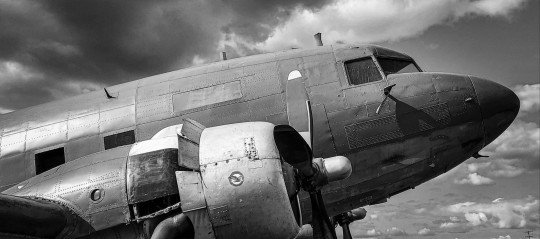
Pulling chocks from her wheels, line personnel scramble beneath her soft beautiful lines. Aerodynamic curves, waiting to serve her desires, a calling to the sky.
The calm before flight, interrupted by the captain's call, "Clear, right!" A signal to anyone nearby to remain clear of the right propeller.
Pressing the primer, starter, and vibrator switches to the right, the first officer watches as her three-blade propeller begins to rotate on the starboard engine. On the twelfth rotation, puffs of smoke pour from the exhaust as the C-47 rumbles to life—vibrating the entire airframe.
Quickly releasing the starter switch, the first officer keeps pressure on the remaining switches, monitoring the response from the engine. As the rumble transitions to a roar, he releases the vibrator switch while gently advancing the mixture lever, he continues to work the primer until her engine settles into a consistent hum.

Waiting for the signal from the captain, the first officer prepares to repeat the procedure on her left engine—accomplishing the same series of steps that would be repeated countless times through the decades prior to each flight.
Whether preparing for her daring airborne drops over Normandy; flying the Hump between India and China; to rescuing U.S. forces from the frozen world of North Korea; or supplying the Berlin airlift; the rumble of each engine start still echos through aviation history today.
While her civilian sister, the Douglas DC-3, would serve U.S. airlines, the C-47 Skytrain—sometimes referred to as Gooney Bird—operated as a military transport aircraft from WW2 to Vietnam. While so many other aircraft steal the spotlight, the U.S. C-47 played a major role in conflict, a role unmatched during her era of flight.
Even today, her DC-3 sister still rumbles off runways, serving poorer nations around the globe. A testament to superior aircraft design, a soft simple beauty only recognized by her airmen.
My photos: Douglas C-47 Skytrain Mott's Military Museum, Groveport, October 16, 2021.
By @aviationgeek71
#c 47 skytrain#avgeek#aviation#aviation history#history#my photography#my photo#my writing#original photography#original writing
34 notes
·
View notes
Text




From “Poem Of The End” by Marina Tsvetaeva, translated from Russian by Elaine Feinstein
*
Prague. When I think of Prague I see the Russian poet Marina Tsvetaeva separating from her lover Konstantin Rozdevitch on the Charles Bridge, her heart breaking, her body burning. Like an animal stabbed in the stomach, she begs for 1 inch of lead to the heart. Everywhere, she is an exile everywhere she goes. All poets are, for “life is the place where it’s forbidden to live.” (I had used that Tsvetaeva line as the title for the poem that opens my Sunflower book, the poem about being lost: "She is lost and I am lost but the difference is she is a novice at being lost, whereas I have always been without country.")
12 years ago I saw the bridge. I wrote:
Everything shrouded in a mystical slime. A crazed sleep-deprived flâneuse wandering through old European cities with a notebook full of somniloquent scribblings. The people walk around looking all processional and I swear to God, the tourists on the Charles Bridge in Prague were part of some kind of sublime funeral. It seemed like everyone was wearing black, walking past the blackened statues with their black gloves while the black birds soared across the sky. I break down teary-eyed on the train from Berlin to Prague...
*
Yesterday at dawn I went to the Charles Bridge to read sections 7 and 8 of Tsvetaeva's "Poem of the End" (see section 8 above). I used to go to the Brooklyn Bridge to read the "Atlantis" section of Hart Crane's The Bridge. I guess I feel that to understand something about the spiritual topography of my favorite poets, I should go to the places that inspired the poems and read them, to learn something about the architecture of memory, how we are emotionally branded by certain places of affective intensity.
It was cold and windy. Gulls and other birds were circling and cawing. Suddenly my phone battery went from 87% to 1%. After reading the poem I went into a cafe to charge my phone. A chill to my bone. A fatigue unlike anything I had felt before--beyond the typical jet lag. Went home and fell asleep. Dreamed of the phantoms of the heart, the ones that haunt the poets--everything gets mixed up there, in dreams. What are you chasing? "And when I wake she melts away into the sand." Did not want the dream to end, but I had a talk to deliver at the Academy of Fine Arts. After the talk we ate Neapolitan pizza and someone told me about her dreams of escaping death. She was in an elevator hurtling toward the ground. Death is coming. She resigned herself to it. Always, she accepts what is coming. But when the elevator crashed on the ground she was somehow unscathed. The door opened: desert. She was in the desert.
I like to think that everywhere I go, I am walking in the footsteps of a poet. What did she see, who did she become passing through this place? I see Tsvetaeva murdering her love, transforming, sensual and holy, from a lover into a poet. What is it that sinks like a ship, in the last line of the poem? She is letting go. Love is swallowed by the wave.
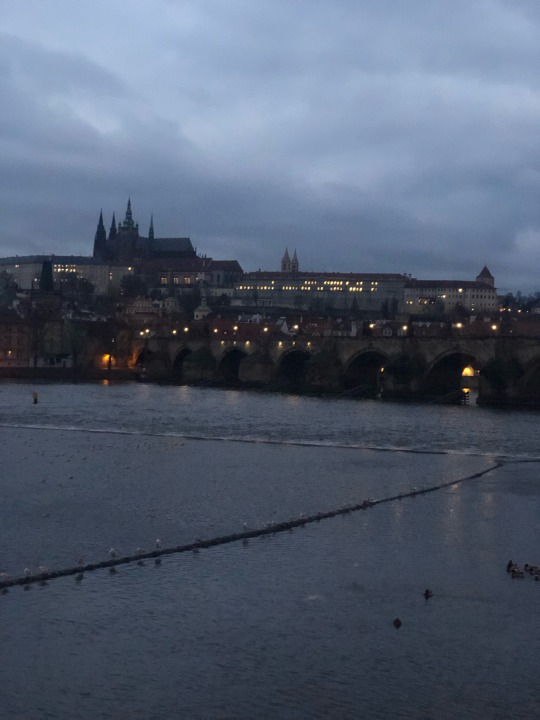
The Charles Bridge just before dawn.


41 notes
·
View notes
Note
Leon Goretzka, kisses in the morning<33333
this man needs more drabbles!
the sun already settled in the morning sky, cascading hues of apricot and dandelion over the baby blue. soft, cotton clouds drifted above the houses, and the early birds chirped their cheerful melodies.
it was the first day of your vacation, the first morning to sleep in while most people were on their way to work. the weekend was longer than expected, the short trip to berlin for another match, turned into an overnight sight seeing adventure. in the middle of the night, when the moon already prepared to disappear behind the brightness of the sun, leon carried you home on his back.
that adventure ended around six hours ago, the clock already striking eleven a.m. while you were still snuggled up comfortably in the blanket, leon woke up around thirty minutes ago. an arm underneath his head, the other still draped over your belly, his cinnamon brown eyes watched you. chest rising slowly, and falling merely a second later again, the breaths leaving and entering your mouth in a steady rhythm.
scooting closer to your warm body, your shoulder pressed into his naked chest, leon leaned up slightly. his face found a home between your shoulder and your jaw, peppering the side of your throat with multiple small, and gentle kisses. lips moving along the span of your cheek, he placed a soft peck on the corner of your mouth.
it was difficult to keep himself away from you, when it was too rare that the two of you shared a day off. mostly, either he was home alone, or you had to stay at the house by yourself. this one time, it all worked out perfectly. shifting slightly, the duvets rustled with his movements, leon leaned over your body, and placed s quick peck on your dry lips.
while he was too deeply focused on the change of expression on your face, one of your hands already traveled and landed on his neck. soft pads caressed over his skin, playing with the small locks on the back of his head. „good morning, my love.“ leon whispered, pushing himself further up with his underarms, and pressing a quick but soft kiss on your lips.
„good morning, baby.“ you replied. the bed shifted around you, announcing the movement of leon’s body without having to open to your eyes to see it for yourself. he was hovering above you, one of his thick legs between yours and the other on the far left side.
mouth hovering over yours, you giggled slightly. fingertips pressed against his beard and cheek, you tried to push him away from you. „morning breath, leon. it‘s ew.“ instead of moving away, leon chuckled and shook the head about the comment.
„look, i don’t care. i can handle it. just give me a couple of pecks before i get up.“ his words always sounded so promising, the deep voice you started to love from the first conversation was raspy, almost breaking at the end while the syllables coaxed out of his dry throat. „just an exception! don’t try that tomorrow!“
it was almost a threat, almost a serious comment he would not have witnessed how the corners of your mouth curled upwards. „okay,“ leon accepted your words, knowing that he wasn’t defeated yet. his head dipped down once again, pressing his lips against yours. multiple times, a kiss only lasted two or three seconds.
leon‘s calm attitude, and the disparate ways to show his loving side, always made it difficult to not fall head over heels for him again. but you did. every single day.
#football blurb#football drabble#football imagine#german football#bayern münchen#fc bayern munich#bayern munich#football fans#fc bayern#bayern munchen#fc bayern münchen#fc bayern münchen imagine#bayern münchen imagine#leon goretzka imagine#leon goretzka#leon goretzka drabble#leon goretzka x reader#leon goretzka x you#leon goretzka blurb#football#football lover#football x reader#football x you#bayern munich x reader#request#requested#drabbleland
119 notes
·
View notes
Note
Felix Richter's teenage son discovers his father is a serial killer one night.
Rating: Mature (themes/horror)
Fandom: Dead By Daylight
Characters: Felix Richter, Milo Richter
Content: No Entity/Family AU, Angst, father son relationship, abuse, gaslighting, serial killer Felix
—
Milo hadn’t felt good about betraying his father, but the moment he heard what the man was doing, when he saw what he did to that poor man… He had to do something. Running from the house in a t-shirt and pyjama bottoms to the nearest police station was at least something. He felt a lot of anxiety making the statement, almost throwing up at one point but felt a sense of relief when it was signed. The detective took it away and then another officer came to inform Milo that his guardian was here to take him home. He followed them dutifully, but when he saw just what was meant by ‘guardian’ his intestines turned to water and his lungs froze stopping his breathing instantly. He’d assumed a member of his family’s staff would be there, or maybe at a stretch his mother. The last person he anticipated was his father, with how nice the police had been - getting him cups of hot chocolate and listening patiently - he was convinced they were building a case against the man. His shoulders dropped in defeat, his gaze falling to the ground. He didn’t even look at his father’s false, loving smile, or at his soulless eyes. Milo simply stood and listened to Felix thank the officers for finding him, he hated that fake caring voice.
“Thank you for letting me know, gentlemen,” Felix said above Milo’s head. “He is not a well boy, his current therapist thinks it’s Bipolar disorder. He gets fits of mania, he starts to believe odd things.���
How fucking dare he! Milo thought bitterly, anger rising in him like venom.
“That explains it,” the detective who’d listened to Milo so compassionately sighed. That one in particular stung. “we thought he was fairly convinced of what he’d seen. Didn’t seem like a liar.”
“He isn’t, he always has such good intentions. I’m sure he thought he was doing the right thing, he’s not a delinquent,” Felix elaborated, his voice far too smooth and charming.
Not a delinquent, just a psycho, Milo added internally and bitterly.
“Anyway, I’ll be taking him home.” Felix wrapped one arm around Milo’s thin shoulders, a little too tightly. “I’m so sorry about all this trouble he’s caused.”
“No problem, Sir. Get home safe,” the sergeant called to them as Felix guided Milo out of the police station. He was silent as he led him outside into the cold Berlin air, the fact Milo had shown up in dog patterned sky blue pyjama bottoms, a Kraftklub t-shirt, and his trainers with no socks in the middle of December probably hadn’t helped his case.
“Milo, what were you thinking coming out barely dressed?” Felix tutted, not releasing his grip on Milo’s shoulders. It wasn’t as tight as before, it was too secure for him to escape but it was almost loving.
“Are you going to hurt me?” Was all Milo could say, a stammer between two shaking lips.
“Of course not, when have I ever hurt you?”
“I… Well, I-”
“I’m sure whatever your mind has convinced you of has got you all confused and terrified,” Felix interrupted almost sympathetically. Milo’s feet dug into the ground as he stood fused still and refusing to move even as Felix pulled him towards his parked car. The sleek, black Mercedes sat there as a sickening display of wealth in the run down police station.
“I know what I saw,” Milo said between clenched teeth.
“I’m sure you do.”
“I’ve been taking my meds. All of them. This is real.”
“Perhaps we need to make some changes. Get in the car, Milo,” Felix warned as he unlocked the doors. Milo gave in, slipping into the passenger seat, shivering as he sat against the leather seat and found his body growing colder. When his father turned on the engine and the heating hit Milo’s skinny bare arms he let out a sigh of relief, tears now falling down his cheeks. “There we go, isn’t that better.”
“I don’t understand why. Why did you- just give me a reason. Were they bad people? Did you- what was it?”
“Clearly we need to get you some food, a nice warm bed, and tomorrow we can arrange an emergency appointment with Doctor Achen.”
“Don’t you want to know what I saw?”
“Fine. Tell me. What did you see?” Felix sighed in resignation.
“Well, I didn’t want to believe it at first. I mean, I thought it was a strange coincidence. Every time you were working late the killings happened, and at first I was worried that whoever it was would hurt you. You were so calm about going out after dark with a murderer on the loose.
“And then… I was up late, not doing anything in particular just sat up playing some games and I heard it. Weird howling noises from downstairs. So I went down, to the basement, and…” Milo sniffed and coughed for a moment. What he saw behind the door, what he saw his father doing… He repeated it to the police and the disgust and shame led to a rather severe panic attack. Perhaps that was when they began to think Milo was just some lying, crazed young man, he thought.
“My poor boy,” Felix crooned. He rubbed Milo’s back and in turn Milo didn’t have the energy to push him away. “That sounds like such a terrifying thing to witness. Your mind is so cruel to you, conjuring up such things.” Milo wanted to scream, if it had been the case his father was being so understanding and gentle. So much so, Milo began to wonder… what if it was a hallucination?
“I- Maybe you’re right,” Milo mumbled, Felix let go of him and turned the engine of the car on.
“I am so glad you’re starting to ground yourself, starting to realise the truth. A step in the right direction, I think,” Felix responded. Milo was still tense, he hadn’t quite said that. He was only starting to doubt.
That was until he began staring at his father. There were so many clues something was wrong, he almost seemed like the manic one. His speech was faster than normal, and his eyes were wider… but only slightly. Milo couldn’t help but feel like his father was covering something up, as if he did see something that Felix didn’t want anyone else to know. What really cemented to Milo that he wasn’t simply having an episode were his father’s hands. Or more specifically, his fingernails.
Milo saw dried blood encrusted under his thumbnail, that he hadn’t quite washed off. The right thumb that Milo saw press into the stranger’s eyeball as the victim screamed until the sound was carved into Milo’s brain.
#dead by daylight#dbd fanfic#Felix richter#Milo richter oc#no entity au#family au#angst#father son#serial killer au#gaslighting#abuse
4 notes
·
View notes
Text

Caspar David Friedrich - Village Landscape in Morning Light (The Lone Tree), 1822 oil on canvas, 55 x 71 cm Nationalgalerie, Berlin
This painting seems fairly realistic at first sight. The composition is not the product of a single, specific visual impression, however, but is highly artificial, being composed of no less than six individual studies which Friedrich executed between 1806 and 1810. The landscape-format composition presents a plain extending without interruption into the background, seen as if the viewer were standing on the gentle rise which begins in the bottom left and right-hand corners. From here, our gaze falls upon a small pond - to which no path leads - and upon a huge oak tree, which looks at first sight to be fairly close by. Once our eyes have also registered the diminutive figure of a shepherd leaning against its trunk, however, the tree suddenly appears further away and hence gigantic.
Aspects of proximity and distance are permanently chafing against each other throughout the painting, whereby rational everyday experience is thwarted by visual irrationality. While an idyll of unspoilt nature unfolds around the oak and the shepherd, the villages and church spires of the land developed by man are as it were concealed and compressed within a valley by the mountains and the sky high above. All this points to an overall symbolism in which the oak tree, monumentalized to the status of protagonist, is a metaphor for growth and decay or for human life in general. via
2 notes
·
View notes
Text
Heard commotion outside! A low, very low "crok-crok-crok" in the air! Me, sprinting to the window! A huge, dark figure circling above! THEN! The murder and magpies loudly making their displeasure known! And then the huge figure flew one more round in the sky and vanished. Holy shite, if this raven will settle somewhere around here... I'm not sure this will be a good thing. I mean, objectively, it would be awesome (there are only about 30 pairs of ravens in and around Berlin, so the more the merrier I'd say). But holy hell, that dude was monstrous.
2 notes
·
View notes
Text
Mr. Blue Sky — VoicePlay music video
youtube
The best music evokes powerful emotions. In this case, that emotion is likely to be delight. VoicePlay embodies their name for a toe-tapping classic (and surprise mashup) that is pretty much guaranteed to lift your spirits.
Details:
title: Mr. Blue Sky
original songs / performers: "Mr. Blue Sky" by the Electric Light Orchestra (ELO); "Blue Skies" by Ben Selvin & Charles Kaley (as The Knickerbockers)
written by: "Mr. Blue Sky" by Jeff Lynne; "Blue Skies" by Irving Berlin
arranged by: Geoff Castellucci
release date: 8 March 2019
My favorite bits:
that jaunty, driving rhythm from Layne and Geoff
J.None's exuberant tone on the opening lines
those crunchy harmonies on ♫ "sun shines brightly" ♫ ☀
Eli and J instinctively doing some of the arm-ography from their stage version at the end of the first verse
the smooth transition into "Blue Skies"
Geoff matching J down the octave for the descending ♫ "Who-o-oa" ♫
Layne's playful cheek pops & descending percussion riff
Earl's cute head bobble to go with the falling run on ♫ "so lo-o-o-ong" ♫
that lovely bell chord of ♫ "you you you" ♫ leading into the bridge
adding the fun robotic effect to emulate the original's vocoder 🤖
the rising scoop Geoff puts on his ♫ "yeaaah" ♫ under the final round of clapping
the build-up to the big finish
additional nod for the guys sporting thematically appropriate blue outfits, accentuated by the bar lights behind them



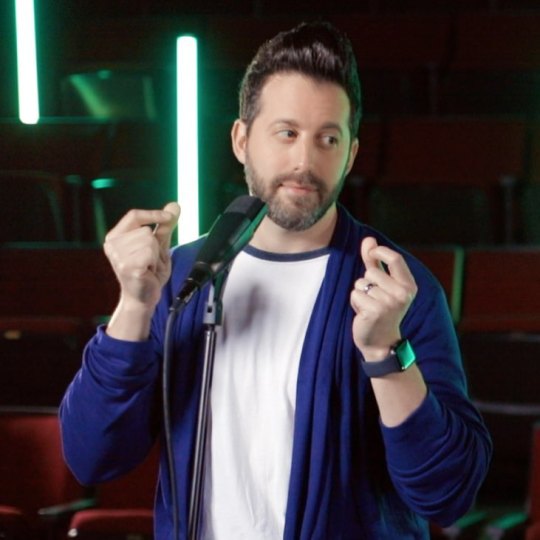





Trivia:
The guys had been performing this arrangement as part of their live shows for at least a year and a half before this recording. The earliest audience video I've found is from the 2017 Kettering A Cappella Festival.
They filmed this video and their next PartWork video, a cover of "Any Way You Want It" by Journey, in one long session. (J.None's outfit in the outro is from the second one.)
When they performed the song live, they replicated the vocoder effect in the bridge by singing through small megaphones. They also included a tutorial break for the audience, because without it, late clappers would throw the guys off the beat.
The cover art emulates the ELO spaceship logo, but seen from above rather than at an angle. It was designed by their pal and frequent production collaborator Rek Dunn.
This track was later included on VoicePlay's "Citrus" album, which compiled most of the songs they recorded from 2017-19. Because the individual songs had already been made available digitally, that album is exclusively a physical item that can only be purchased at live shows or through their website.
2 notes
·
View notes
Text
Last year, troubled by the seeming intractability of these problems, I began looking for solutions outside the United States. Could the answer be rent control, as in Berlin? It might have seemed that way a decade or so ago, before investors and new residents began pouring into the city, causing land values to quintuple; now, despite rent-stabilization laws, even the apartments that no one else wanted to buy 15 years ago are huge moneymakers. Many residents with affordable rental contracts are locked into them because it would be too expensive or competitive to move. Frustrated by the housing squeeze, tenant organizers recently put forth an “expropriation” measure, which called for landlords with more than 3,000 units to sell their holdings back to the government at below-market prices. In a 2021 referendum, 59 percent of Berliners voted in favor of it, but it’s not clear whether it will ever be implemented.
Could the answer be loosening zoning restrictions, as Tokyo did in 2002? That has certainly helped. In 2014, there was more home construction in the city than in all of England. Since then, home prices have stabilized. Tokyo is largely celebrated as a model by YIMBYs (members of the “yes, in my backyard” movement) because they like its market-driven approach to housing abundance. They often point out that the city builds five times as much housing per capita as California. But Japan is a very different market because of its earthquake risk: Because regulatory codes and mitigation technologies are ever improving, structures often fully depreciate within 35 years. Older homes are often undermaintained because there’s little expectation that any investment might be recaptured upon resale; they’re thought of like used clothing or cars — you resell at a loss.
Auckland, New Zealand, might seem like a more applicable example. In 2016, the city, which has one of the most expensive housing markets in the world, “upzoned” 75 percent of its residential land, increasing its legal capacity for housing by about 300 percent in an effort to encourage multifamily-housing construction and tamp down prices. In areas that were upzoned, the total number of building permits granted (a way of estimating new construction) more than quadrupled from 2016 to 2021. As intended, the relative value of underdeveloped land increased, because it could suddenly host more housing, and the relative value of units in densely developed areas decreased, tempering sky-high prices. But there are limits to what upzoning can do. Often the benefits of allowing greater density are captured by developers, who price the new units far above cost. It doesn’t offer renters security or directly create the type of housing most needed: affordable housing.
That’s what differentiates Vienna. Perhaps no other developed city has done more to protect residents from the commodification of housing. In Vienna, 43 percent of all housing is insulated from the market, meaning the rental prices reflect costs or rates set by law — not “what the market will bear” or what a person with no other options will pay. The government subsidizes affordable units for a wide range of incomes. The mean gross household income in Vienna is 57,700 euros a year, but any person who makes under 70,000 euros qualifies for a Gemeindebau unit. Once in, you never have to leave. It doesn’t matter if you start earning more. The government never checks your salary again. Two-thirds of the city’s rental housing is covered by rent control, and all tenants have just-cause eviction protections. Such regulations, when coupled with adequate supply, give renters a level of stability comparable to American owners with fixed mortgages. As a result, 80 percent of all households in Vienna choose to rent.
The key difference is that Vienna prioritizes subsidizing construction, while the United States prioritizes subsidizing people, with things like housing vouchers. One model focuses on supply, the other on demand. Vienna’s choice illustrates a fundamental economic reality, which is that a large-enough supply of social housing offers a market alternative that improves housing for all.
21 notes
·
View notes
Text
Ash-ra
So I've annoyed all of my friends by going on and on about this band to the point where no one is answering my emails any more. So I'm just going to be spamming this tag until all of Tumblr blocks me (no, really - if I irritate you, I'd much rather you just block me and go on with your online life!) Buckle up, I'm going in.
youtube
When I first found started exploring Buck-Tick, this was one of the first songs I clicked on, just based on the title alone. It's called Ash-ra*, off an album literally entitled COSMOS - do you think there's a chance there might be some Kosmische Krautrock going on here?
*I've since seen some blogs express confusion as to why the title uses this spelling, rather than the Japanese Asura or Ashura. ASH-RA TEMPEL. Lords of Berlin-School Kosmische (Kosmische - "Cosmic" - is what many of the actual German groups of the time called the music that we British jokingly called "Krautrock") led by chess-board pattern loving Meister of electronic guitar manipulation, Manuel Göttsching.
I hit play.
::drums start up::
YES OH GOD YES - Toll immediately goes in for the most Lange-Gerade MOTORIK. This isn't even Dinger-beat, this is the full Jaki Liebezeit, like Mother Sky on speed.
12 seconds in, and there's strange slithering static noises, like the glitchy tape experiments on the B-side of NEU! 2 - yes YES! The tiger is OUT!
And then the guitar starts
Effortless, weightless, just hanging above the driving rhythm section like a seagull riding a glider. This is pure Michael Rother, that endless tone that seems to stretch off into the horizon, a descending scale that dissipates into feathery clouds of... feedback? tremolo arm abuse? theremin? processed guitar? (In the live video, it looks like some kind of harmonics-modulation pedal)
Words cannot even express how much I love the way Imai Hisashi abuses his guitar. This man is a sound pervert - I've since read translated interviews where he expresses contempt that a guitarist should act like a guitar-player - he treats the instrument purely as a tone-generator for him to transform with electronic treatments and manipulations (my favourite musicians have always treated their instruments this way - from what Florian Schneider of Kraftwerk did with his flute, to what drone-rockers like Sonic Boom of Spacemen 3 and Kevin Shields of MBV did with guitars). But the cosmic space-noises here are so otherworldly I genuinely cannot tell where guitar feedback ends and theremin begins, it's a haze of swooping electronic bliss.
Vocals - to be really true to the Kosmische form, Imai should have had the courage to just spout surreal English-Japanese-German word salad a la Damo Suzuki, but yes, there are lyrics, I'm sure someone else has written about them. But in my fan-fiction headcanon version of events, Imai just scribbled "Ash-ra" on the demo tape to indicate this was his Krautrock song, and Atsushi, not knowing the first thing about Krautrock, took this as an instruction to write a song about the actual Japanese Demons.
1:50 minutes in. BASS SOLO. At some point, I'm going to write another essay about how Yutaka is the most underrated musician of this band. He's the one who holds together the floating psychedelic guitar haze and the speed-punk drums, and yet somehow makes it all insanely danceable. He absolutely nails the sinewy funk of Holger Czukay, both melodic and booty-shaking.
And then at 2:04 the BEST BIT of the WHOLE SONG
PNEUMATIC DRILL SOLO!!!
Unfortunately, it seems they don't do this bit live. COWARDS!
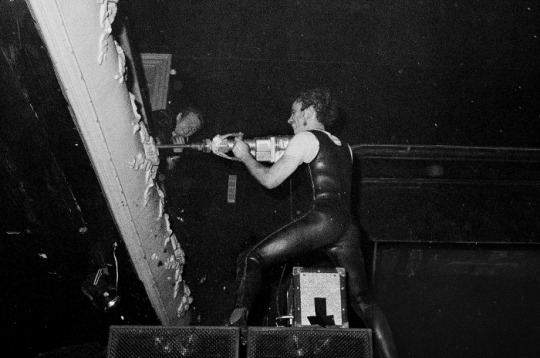
REAL German Experimental bands play their drills live!
But it's the attention to detail that makes this band so intoxicating to listen to - layers and layers of sonic references layered on top of one another, the pneumatic drill, the squiggles of electronic sound, and then at the end, the coda...
A short drifting suite of classical piano, because it's the moments of peace that make the psychedelic noise-storms so intense, and vice-versa.
#buck-tick#hisashi imai#ash-ra#cosmos#krautrock#kosmische#ash ra tempel worship#imai hisashi#I want to marry this guy's guitar tone and have feedback babies#Youtube
9 notes
·
View notes
Text
tuesday again 4/11/2023
more concise than usual. don't get used to it.
listening
the trombone is an underutilized instrument in indie rock. this is a delightful music video, the vocals bother me a lot less now that i know they're deliberately going for a robotic effect.
youtube
if you liked the Killing Eve soundtrack (largely brought to you by Unloved and Junoire), that sort of very smooth lightly psych-rock flavored thinking woman's music to smoke clove cigarettes to while slouching around used bookstores, you may like this song! reading this back it sounds kind of snotty but sometimes you need a french woman main character song to make doing errands feel like being on a secret mission
i found one of their previous albums, Psycho Tropical Berlin, sort of a one-hit wonder with Hypsoline (the credits song for As Above So Below) but it really is a fucking banger
i want the album art as a shirt So Bad but not enough to pay $25 shipping from france about it.

i think this was off the spotify weekly discover playlist? can't imagine where else i would have run across it
-
reading
remember the vampire-adjacent private detective novels i was reading? not the ones from last week, the earlier ones. the author alexis hall chucks you a free short story Sand and Ruin and Gold if u sign up for his mailing list.
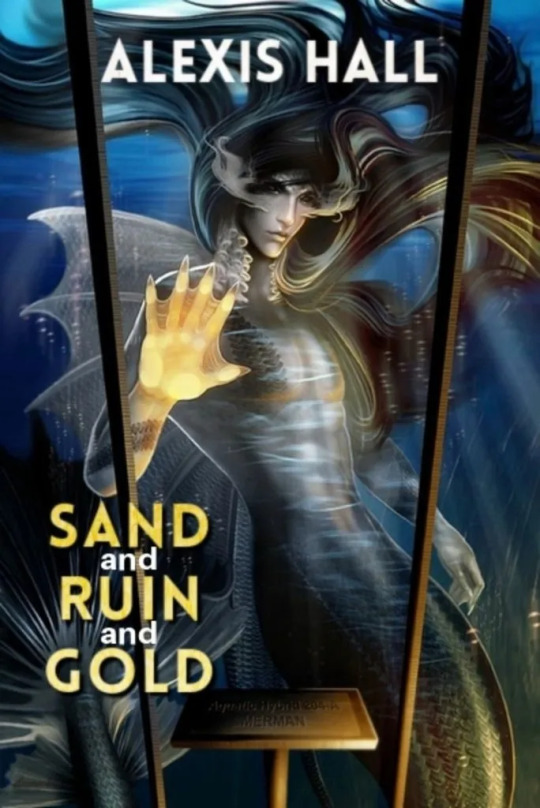
i think the orca comparisons are a touch heavy-handed at times, but the imagery in this thing...i really am a sucker for the rot of a coastal tourist trap. i bear no fondness, but i do give them a weary nod of acknowledgement. this town is a construct for other people to enjoy. i typed out a very long thing about how the economics of tourism shaped the town and everything about the civic calendar down to the school year, but--it was not really meant to have real residents or be a real place. there was absolutely nothing to do and nowhere to hang out without paying for anything in the off season.
It was just after closing on Reunification Day, the last of the stragglers gathered up and banished back to their world. A spiral of faded, plastic bunting from the celebrations had blown into one of the pools. I went to get a pole to hook it out but heard a splash and turned in time to see Nerites leap from the water in a gleam of skin and scales. The wind whisked the ribbon from between his fingers, and he reached after it, his body twisting sinuously in the air before he crashed into the pool again.
I’d never seen him—or any of them—move like that before. The jumps and slides we taught them were supposed to mimic their natural behaviours, but they rarely performed them spontaneously. And this was something else again: a wild leap and an ungainly splash, more beautiful to me than the most perfect bow or spin because it seemed so absolutely heedless.
He surfaced again, almost vertical, spinning in the pale-grey spray, one hand catching for the bunting’s tail. A tug, and it tumbled from the sky, nothing but a lifeless piece of string.
i am beginning to remember that all the shit that really sticks in my brain is in short stories and novellas you (general, including me) have never heard of.
-
watching
star wars resistance. i am finding this far more enjoyable than the bad batch or the mandalorian bc it has something of a storyline that it sticks to, even though most of the runtime is a teen... he's not really a teen, he was a new republic pilot so he's probably like twenty but in my heart he's like fifteen. part of the appeal of ds9 for me was a very consolidated set of recurring background characters and getting to see that there are other things/factions/people all working for their own ends. baby's first practice spy mission.
the ship design is really killer: it asks and answers the question "what if a pirate spaceship was also a galleon?"

i find myself excited to watch the next episode, which is not a familiar feeling when i watch star wars stuff. i really hope s2 holds my interest as much as s1 did.
why am i doing this? i have seen all the star wars except for: most of the LEGO stuff, most of the addendum and errata for tcw (including the crystal crisis arc), the holiday special, and most of the droids and ewoks animated shows. like i am Really scraping the bottom of the barrel here, even though i'm not really sure why this show fell into such obscurity.
-
playing
a bit cranky with weird west, bc i think to get past this stealth level i will have to dismiss my companion (can't seem to knock out guards unless i'm standing up, the companion AI has a very loose definition of "staying close" and is only "invisible" if you're also crouching, and you can't direct your companion to stay put in one place OR to stay close/stay crouched permanently. i may have exhausted most of the appeal of the world on my first fifteen-hour run through the first story. i am more than a little disappointed bc i did have a fuckton of fun in those fifteen hours and was expecting the good times to continue.
-
making
still halfheartedly poking away at the baby blanket, less than half a repeat this week and i don't feel like getting up, digging the blanket out of the catproof bag, and putting enough lights on for a real photo. this is repeat 7/10 tho so we are slowly approaching the end
23 notes
·
View notes
Text
Thursday 11th April 2024
The first sight on opening the blinds this morning at 7.45 was the clear blue sky totally uninterrupted by cloud. The second noticeable thing was Table Mountain clearly peeping above the building in front of us. What's more there was no cloud covering any of it's 3558ft of solid granite rock. Looking good we thought to get to the top today. Originally named Hoerikwaggo by the San tribe, in time this became difficult to pronounce so after tables had been invented, António de Saldanha from Portugal climbed the mighty mountain in 1503 and because of it's uncanny likeness to a table named it Taboa do Cabo (Table of the Cape). Clearly this was also difficult for some, so it became Table Mountain as we know it today.
Having said all that, for the third day running the mountain was shut, this time due to very high winds.
Plan B. So we googled Art Galleries and found reference to South Africa National Gallery just a mile away, so best foot forward and all that. Our route seemed to take us from the now familiar Waterfront area out into the CBD and beyond to what began to morph into a very pleasing part of town. The buildings became colonial, Georgian and well, British. Off to our left was the grand stuccoed and palladian shape of the House of Parliament. Over to our right was the Cathedral of St.George where of course Archbishop Tutu had been in residence, and also contains the organ incidentally from St.Margarets London, moved there in 1909. Between these two buildings was the entrance to a stunning and quite fetching park, passing yet more stuccoed buildings and culminating with the National Gallery. These grounds formed an unexpected oasis of tranquility and occasionally, white squirrels. As the sun shone, we felt quite grateful the mountain was shut because we probably would not have found this hallowed place. The gardens were originally landscaped in 1652 to provide fresh vegetables to Dutch trading ships that harboured in Cape Town on navigating the Cape of Good Hope. The first Cape wine was produced in 1656 from vines planted in these gardens. Now laid out in partarre form with rose gardens it makes a truly lovely spot and we enjoyed a flat white and lunch within it's leafy confines. Autumn is on its way and gardeners were gathering leaves.
Very interesting art gallery. The curators struggle with achieving the right mix of African versus European art. The problem being that they have an awful lot of European/ British output and very little African. This balance made even worse by the years of apartheid when African art was very much disparaged. Thankfully one leading light in the indigenous department shines through; one Esther Mahlangu who despite lacking early on with confidence and encouragement stuck to her feather brush and produced a prolific output. Including painting her parents house (ie all of it, top to bottom) along with a Series 5 BMW! You try and stop her.
Tiring now we turned for the Waterfront again, popping into Avis Rental to remind them to hose down the charabanc for us tomorrow so that we can set forth on the next stage of our journey. We agreed they could deliver it to us at the apartment while they were about it.
Back to the apartment for dinner. Great day and it is still blowing a gale outside.
ps Also found a chunk of the Berlin Wall!
pps The whole town is swarming tonight with people celebrating the end of Ramadan. Not to feel outdone, we bought a halal sausage!
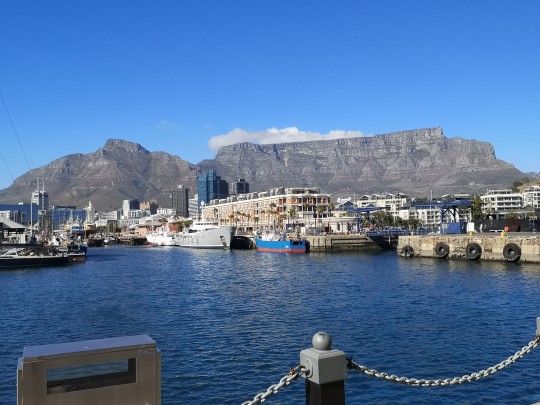

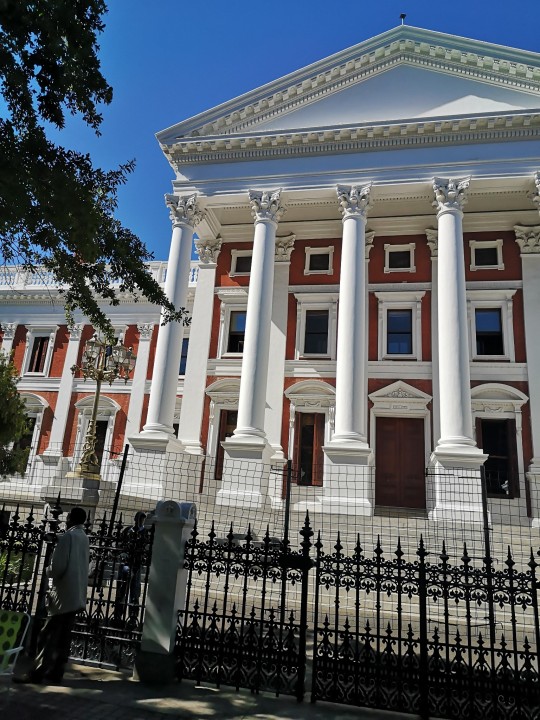
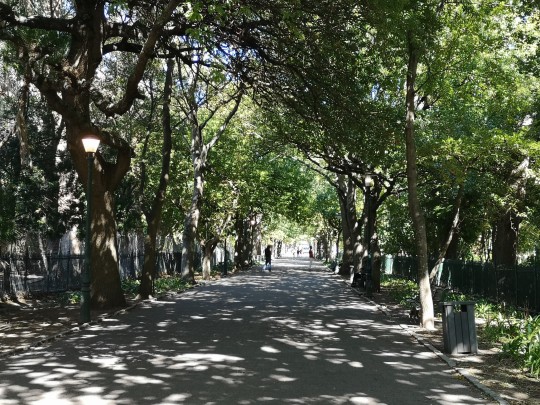
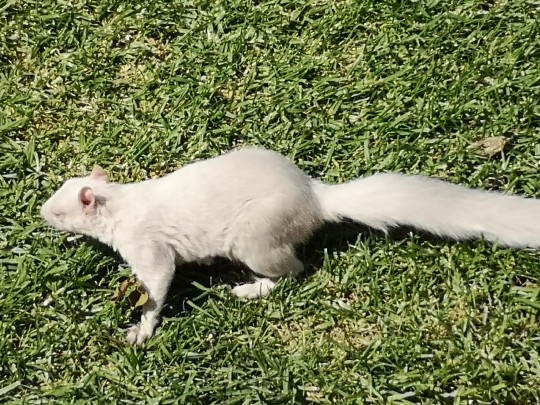
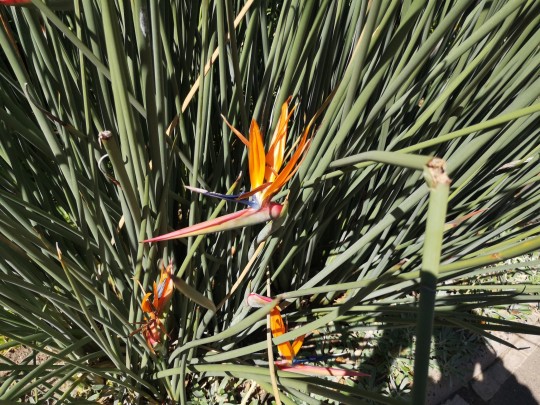
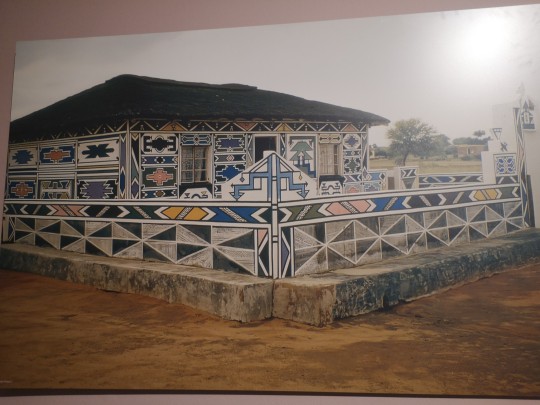
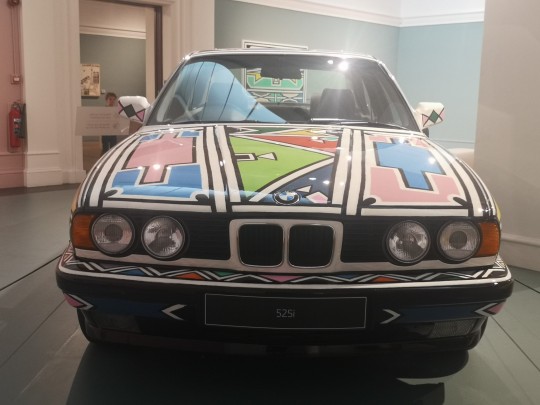
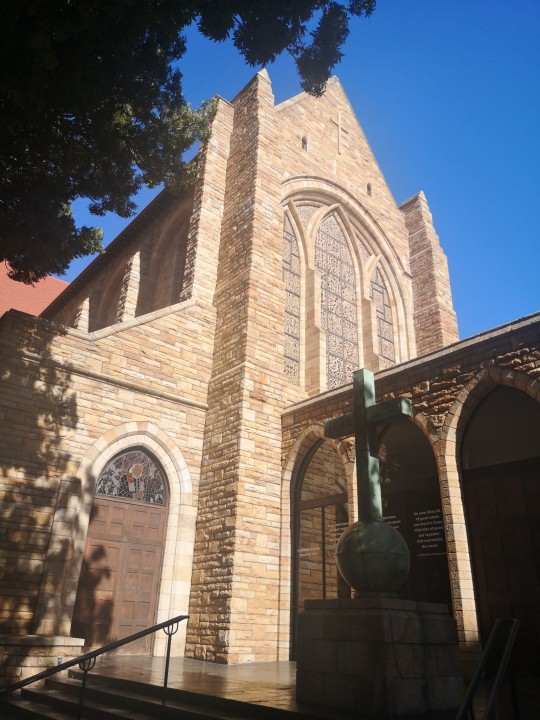

4 notes
·
View notes